What’s the ROI of Automated Pallet Changing Machines in United Kingdom's Brexit-ready Sector?
Are you running a manufacturing or logistics business in the United Kingdom? You probably feel the constant pressure of rising labor costs, unpredictable supply chains, and the need to be more competitive than ever. Manually handling pallets is a slow, expensive, and often dangerous part of your operation. Every damaged product, every workplace injury, and every minute of downtime cuts directly into your profits, making it harder to thrive in the complex post-Brexit economy. What if there was a way to solve these problems with a single, strategic investment that pays for itself?
The return on investment (ROI) for an automated pallet changer in the UK is typically realized within 12 to 24 months. This rapid payback comes from significant reductions in direct labor costs, a near-elimination of product damage during transfer, increased operational speed, and improved workplace safety. For any UK business preparing for a more competitive and demanding future, this automation is not just an upgrade; it's a foundational investment in efficiency and resilience.
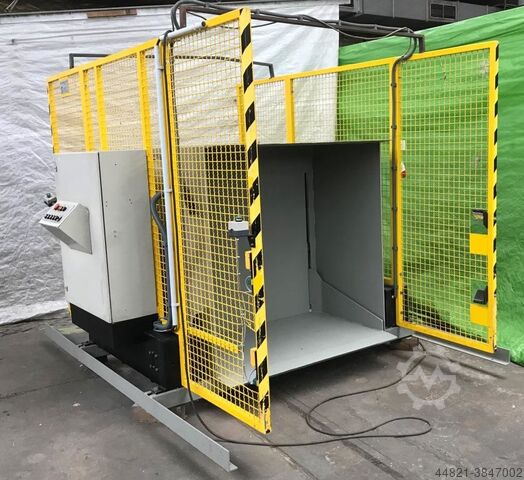
I've spent my entire career in the packing machine industry. I started on the factory floor, learned every nut and bolt, and eventually built my own company, SHJLPACK. I understand the challenges you face because I've lived them. I know what it's like to look at a balance sheet and question every expense. That’s why I want to break down the real, measurable returns of this technology. We will look beyond the simple numbers and explore how this equipment can fundamentally strengthen your business in the unique economic landscape of the UK today.
How do automated pallet changers directly impact labor costs and efficiency in the UK?
Is finding and keeping good warehouse staff a constant headache? Are you watching your wage bill climb higher every year, especially with the UK's rising minimum wage? The manual process of moving goods from one pallet to another is slow and ties up your most valuable asset: your people. This inefficiency creates bottlenecks, slows down your entire operation, and ultimately costs you money. You need a solution that works tirelessly, without breaks or sick days.
Automated pallet changers can reduce the direct labor required for pallet transfer tasks by up to 80%. This immediately translates into lower wage expenses, reduced recruitment and training costs, and allows you to reassign skilled employees to more value-added activities, boosting overall operational efficiency. It’s a direct and powerful way to control one of your biggest operational costs.
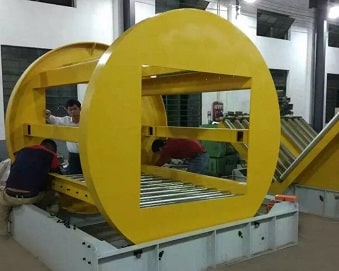
A Deeper Look at the Numbers
When I talk to factory owners, the first question is always about cost. It's the right question to ask. But we must look at the full picture, not just the price of the machine. Let’s break down the real cost of manual pallet handling versus an automated solution in the UK context. Post-Brexit, the labor market has become tighter. Finding workers for physically demanding jobs is harder and more expensive than ever before.
The Manual Method: A Constant Drain
First, consider the direct wages. Let's say a single manual pallet transfer takes two employees 10 minutes. If you are doing this 30 times a day, that's 300 minutes, or 5 hours of labor for two people. That's 10 man-hours per day. In the UK, with an average warehouse operative wage around £12 per hour, that’s £120 per day, just for this one task. That adds up to over £30,000 per year. And this doesn't even include the "hidden" labor costs:
- National Insurance and Pension Contributions: This adds a significant percentage on top of the base wage.
- Recruitment Costs: The cost of advertising, interviewing, and onboarding new staff.
- Training Costs: Time and resources spent teaching new employees safe handling procedures.
- Supervision Time: A manager's time is spent overseeing these manual tasks.
The Automated Method: A Fixed Investment with Growing Returns
Now, let's look at an automated pallet changer. A single operator can manage the machine, and the cycle time is often under 60 seconds. The same 30 transfers per day might take less than an hour of one person's time. The labor savings are immediate and obvious. But the efficiency gains go further. The process is standardized. It happens at the same speed, with the same quality, every single time. This predictability is gold in a manufacturing or logistics environment. It removes a major variable from your daily planning.
Here is a simple comparison:
| Cost Factor | Manual Pallet Handling (Annual Estimate) | Automated Pallet Changer (Annual Estimate) |
|---|---|---|
| Direct Wages | £30,000+ | £3,000 (for supervision) |
| Associated Labor Costs | £6,000+ (NI, pension, etc.) | £600 |
| Recruitment & Training | Variable, can be £1,000s | Minimal after initial setup |
| Employee Downtime | High (breaks, fatigue, sick leave) | Low (scheduled maintenance only) |
| Process Speed | Slow and inconsistent | Fast and consistent |
| Total Estimated Cost | £36,000+ and unpredictable | ~£3,600 and predictable |
The numbers speak for themselves. The machine pays for its labor savings alone, often in less than two years. It turns a large, variable, and growing operational expense into a predictable, fixed cost. This is how smart businesses in the UK are getting ahead. They are automating the low-skill, repetitive tasks to free up capital and people for growth.
You have done the math on labor savings, and it looks promising. But what about the costs that are harder to see on a spreadsheet? Every time a forklift driver accidentally pierces a bag of product, or a stack of boxes topples over during a manual transfer, that's a direct loss. These "small" incidents add up to a significant financial drain over a year. In a post-Brexit world where every penny of profit matters, ignoring these hidden costs is a luxury you cannot afford.
Beyond labor, automated pallet changers generate substantial hidden savings by reducing product damage by up to 90%, lowering insurance premiums due to fewer accidents, cutting pallet management costs, and optimizing valuable warehouse space. These benefits directly address the squeezed margins and operational pressures faced by UK businesses today.
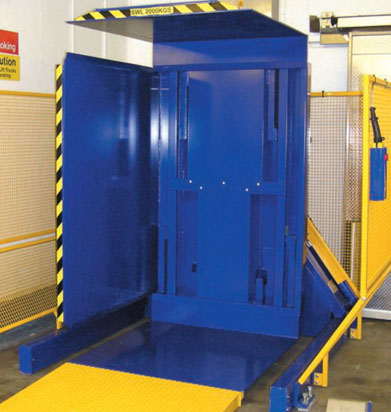
Uncovering the Invisible Costs
From my experience helping factories streamline their packaging lines, the most successful leaders are the ones who hunt down these hidden costs. They understand that operational excellence is about more than just the obvious expenses. Let's shine a light on where an automated pallet changer saves you money in ways you might not have considered.
Drastic Reduction in Product Damage
This is the biggest hidden saving. Manual handling is imprecise. People get tired, they get distracted, and mistakes happen. A pallet changer, however, handles every load with consistent pressure and perfect alignment. It cradles the product securely during the transfer.
- The Cost of Damage: Think about a single damaged pallet of goods. You lose the cost of the goods themselves, the time spent sorting the good from the bad, the cost of disposal, and the administrative time to process the loss. For high-value goods, one incident can cost thousands of pounds. I had a client in the food ingredients sector who was losing nearly 5% of their bagged product to damage during transfers. Automating this process cut that loss to almost zero, saving them over £50,000 a year.
Optimizing Pallet Logistics
Managing pallets is a surprisingly complex part of logistics, especially with cross-border trade.
- Rental Pallet Costs: Many companies use rental pallets (like CHEP or LPR) for domestic shipping but need to switch to cheaper, one-way export pallets for international shipments. Manually transferring goods is slow and risky. An automated changer makes this switch fast and safe, saving labor and preventing damage.
- In-house vs. External Pallets: You can keep your high-quality internal pallets within your facility and transfer goods to lower-cost shipping pallets at the dispatch bay. This reduces loss and damage to your own pallet fleet.
Insurance and Space Savings
Here are two more areas where the savings add up:
| Hidden Savings Area | How Automation Creates Value | Estimated Financial Impact |
|---|---|---|
| Insurance Premiums | Fewer workplace accidents related to manual handling (the leading cause of non-fatal injuries) leads to a better safety record. | Insurance providers often offer lower premiums for businesses with demonstrably lower risk profiles. This can save thousands annually. |
| Warehouse Footprint | Automated changers are compact. They eliminate the need for large, open floor areas for manual pallet restacking. | Frees up valuable floor space for storage or other value-added activities. In high-cost UK industrial areas, every square meter counts. |
In the tough UK market, efficiency is about eliminating waste in all its forms: wasted time, wasted material, and wasted space. An automated pallet changer is a powerful tool to attack all three simultaneously. It is an investment that continues to pay dividends long after the labor savings have paid for the machine itself.
How does automation in pallet handling improve supply chain resilience for UK businesses?
Are you feeling the impact of post-Brexit supply chain disruptions? Port delays, driver shortages, and new customs checks can throw your entire production schedule into chaos. When an expected shipment is late, or an urgent export order needs to go out now, a bottleneck in your own warehouse is the last thing you need. A slow, manual process at a critical point like pallet handling can bring everything to a grinding halt, making a bad situation much worse.
Automation in pallet handling builds supply chain resilience by creating a fast, predictable, and standardized internal logistics process. This decouples your warehouse operations from external volatility, allowing your UK business to absorb delays and respond to opportunities with greater speed and flexibility. It turns a potential weak link into a source of strength.
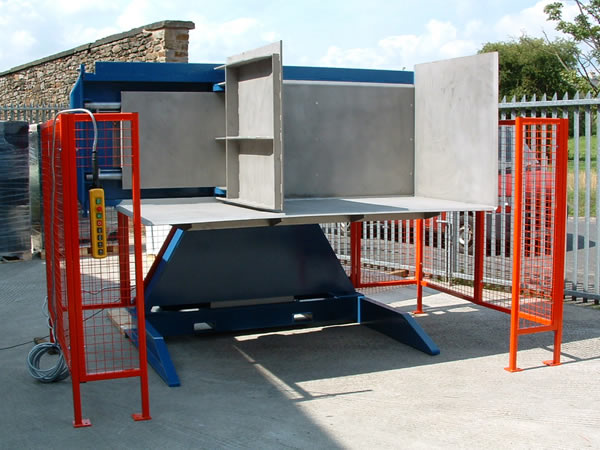
Building a Shock Absorber for Your Operations
I have always seen the factory floor as a system of interconnected flows. When one part of the system is rigid and slow, it creates turbulence that affects everything else. The supply chains connecting the UK to the EU and the rest of the world are now more turbulent. Your business needs a shock absorber. Automation provides that.
Speed and Decoupling
The most direct benefit is speed. An automated pallet changer can process a load in about a minute. A manual team might take 10-15 minutes. This speed is not just about efficiency; it is about agility.
- Handling Delays: Imagine a lorry is delayed by four hours at Dover. When it finally arrives, you need to unload it, potentially switch the goods to your internal pallets, and get them into the warehouse as fast as possible. With a manual process, this creates a huge backlog. With an automated system, you can clear the lorry in a fraction of the time, preventing a ripple effect of delays throughout your facility.
- Seizing Opportunities: Conversely, what if you get a last-minute, high-priority order? You need to pick the goods, transfer them to the correct export pallets, and get them loaded. Automation gives you the speed to say "yes" to these opportunities, making you a more reliable and responsive partner for your customers.
Standardization and Compliance
For UK businesses trading internationally, standardization is no longer optional.
- Meeting Export Rules: Different countries and customers have specific requirements for pallets (e.g., ISPM 15 heat-treated wood, plastic pallets). Manually ensuring every pallet is compliant is prone to error. An automated system makes it simple to transfer goods to the correct, compliant pallet type every time, reducing the risk of a shipment being rejected at the border.
- Customer Requirements: Large retailers often have their own pallet specifications. Being able to quickly and cheaply transfer goods onto their required pallets makes you an easier supplier to work with.
This table shows how automation directly counters common post-Brexit challenges:
| Post-Brexit Challenge | Manual Process Weakness | How Automation Builds Resilience |
|---|---|---|
| Border Delays | Slow receiving/dispatch creates internal backlogs. | High-speed processing clears vehicles quickly, absorbing the delay without disrupting internal flow. |
| Labor Shortages | Heavily reliant on available staff for a critical task. | Reduces dependency on manual labor, ensuring the process can run consistently even during periods of staff shortage. |
| Increased Customs Checks | Errors in pallet type can lead to rejected shipments. | Ensures 100% compliance with pallet requirements through standardized, error-free transfers. |
| Demand Volatility | Slow to scale up or down to meet changing order volumes. | Provides a consistent, high-speed capacity that can easily handle fluctuations in demand without needing extra staff. |
In my career, I've learned that the strongest companies are not the ones that avoid problems, but the ones that build systems to withstand them. Investing in automation like a pallet changer is a strategic decision to build a more robust, resilient business that is ready for the realities of the modern UK economy.
Can pallet changing automation help UK companies meet stricter ESG and safety standards?
Are you facing growing pressure from investors, customers, and regulators to improve your Environmental, Social, and Governance (ESG) performance? Is the safety of your employees a top priority? Manual handling of heavy pallets is one of the biggest sources of workplace injuries, leading to lost time, compensation claims, and a negative impact on your company's social responsibility record. At the same time, the waste from single-use wooden pallets harms your environmental credentials.
Yes, pallet changing automation directly helps UK companies meet stricter ESG and safety standards. It dramatically improves safety (the 'S' in ESG) by eliminating dangerous manual lifting tasks. It also supports environmental goals (the 'E') by enabling a switch to reusable plastic pallets and reducing product and packaging waste. This technology is a practical tool for building a safer, more sustainable operation.
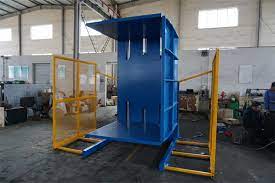
A Practical Path to Better ESG Performance
As an engineer, I like practical solutions. ESG can sometimes feel like an abstract concept, but its impact is very real. It affects your ability to attract investment, win contracts, and build a positive brand reputation. Automation is one of the most direct ways to make measurable improvements in both the 'Social' and 'Environmental' pillars of ESG.
The 'S' in ESG: A Safer Workplace
The UK's Health and Safety Executive (HSE) consistently reports that manual handling is a leading cause of musculoskeletal disorders, which account for a huge portion of all work-related illnesses.
- Eliminating the Risk: An automated pallet changer takes the human element out of the most strenuous part of the job. There is no more bending, twisting, and lifting heavy loads. The machine does all the work. This single change can drastically reduce your company's injury rate.
- The Business Case for Safety: A safer workplace is not just a moral obligation; it is good business. Fewer injuries mean less downtime, lower insurance costs, and improved employee morale. When I walk through a factory, I can feel the difference in a culture that prioritizes safety. It leads to a more engaged and productive workforce. This is a powerful social good that investors and customers value.
The 'E' in ESG: A Greener Operation
The environmental benefits are just as compelling, especially in a world focused on the circular economy.
- Reducing Pallet Waste: Many UK companies use single-use wooden pallets for shipping, which are often disposed of after one trip. An automated pallet changer makes it easy to transfer goods from your durable, reusable in-house pallets (often made of recycled plastic) to cheaper outbound pallets at the last moment. This keeps your high-quality pallets in a closed loop, reducing waste and the constant need to purchase new wooden pallets.
- Minimizing Product Waste: As we discussed earlier, automation prevents product damage. This is also an environmental win. Every damaged product that gets thrown away is a waste of the raw materials, energy, and water that went into making it.
Here’s how automation contributes to key ESG goals:
| ESG Component | Key Goal | How Pallet Changing Automation Contributes |
|---|---|---|
| Social (S) | Reduce Workplace Injuries | Eliminates manual lifting, the primary cause of musculoskeletal injuries. Creates a safer, more modern work environment. |
| Social (S) | Improve Employee Wellbeing | Frees employees from strenuous, repetitive tasks, allowing them to focus on higher-skill roles. Boosts morale and job satisfaction. |
| Environmental (E) | Reduce Waste (Circular Economy) | Enables the use of reusable pallet systems, reducing reliance on single-use wood pallets and lowering wood waste. |
| Environmental (E) | Lower Carbon Footprint | Reduces waste from damaged goods, saving the embodied energy and carbon. Lighter plastic pallets can also reduce transport emissions. |
| Governance (G) | Improve Operational Risk Management | Provides a clear, auditable process that reduces operational risks related to safety, compliance, and supply chain disruption. |
Investing in this technology sends a clear signal to everyone—your team, your customers, and your investors—that you are a forward-thinking UK company committed to building a business that is not only profitable but also safe and sustainable.
What's my take on this?
You've seen the data on labor savings, efficiency, and ESG benefits. It all makes sense on paper. But as a business owner, I know the final decision comes down to a gut feeling. Is this just another piece of machinery, or is it a truly strategic move that will define your future? You are worried about the upfront cost, the disruption of installation, and whether it will really deliver as promised.
In my honest opinion, investing in an automated pallet changer is one of the smartest strategic moves a UK manufacturing or logistics company can make right now. It is not an operational expense; it is a capital investment in resilience. It directly counters the biggest challenges of the post-Brexit economy: labor scarcity, supply chain fragility, and intense cost pressure.
More Than a Machine, It's a New Way of Working
I remember when I was starting my own factory. Every penny counted. I was hesitant to invest in automation because I thought I could get by with smart manual processes. I was wrong. My first major automation investment—a simple wrapping machine—changed everything. It didn't just save labor; it brought a new level of consistency and professionalism to my operation. It allowed my business to grow in ways that would have been impossible before.
I see the same potential with pallet changers today, especially for businesses in the UK. This isn't just about swapping pallets. It's about fundamentally re-thinking a key part of your workflow.
- From a Cost Center to a Strategic Asset: Manual pallet handling is a pure cost center. It adds no value. Automation transforms it into a strategic asset. It becomes a point of strength, speed, and reliability that you can use to win new business.
- Future-Proofing Your Business: The challenges you face today—labor costs, compliance, supply chain issues—are not going away. They are the new normal. Businesses that build systems to handle this reality will thrive. Those who continue with old, manual methods will struggle. This investment is your shield against future uncertainty.
My Advice: Find a Partner, Not a Supplier
Here is my most important piece of advice. Do not just shop for a machine based on price. You are not buying a commodity. You are investing in a critical new capability for your business. You need a partner who understands your challenges and will be there to support you.
When you talk to potential providers, ask these tough questions:
- "How will you help me integrate this into my existing workflow with minimal disruption?" A good partner will have a clear plan for installation and commissioning.
- "What kind of training and after-sales support do you provide in the UK?" The machine is only as good as the support behind it. You need local, responsive service.
- "Can you share case studies of companies like mine who have achieved the ROI you are promising?" Ask for real-world proof.
This is the philosophy behind SHJLPACK. I started this platform to share knowledge because I believe that the right equipment, supported by the right expertise, can transform a business. My journey from engineer to factory owner taught me that success comes from smart, strategic decisions. In the current UK climate, investing in pallet changing automation is one of those decisions.
Conclusion
Automated pallet changers offer a clear ROI, future-proofing UK businesses against labor, cost, and supply chain challenges. It's a strategic move for resilience and long-term growth.



